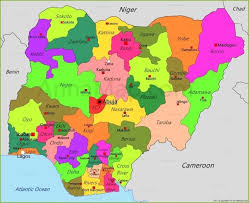Nigeria, Bangladesh and Pakistan have emerged as the top three largest debtor to World Bank’s International Development Association (IDA) as of June 30, 2024. Nigeria is ranked the third-largest debtor reflecting a significant increase in the country’s borrowing from the institution. According to World Bank’s financial data, Nigeria’s exposure to the IDA rose by 14.4 per cent from $14.3 billion in the fiscal year 2023 to $16.5 billion in 2024. The $2.2 billion increase places Nigeria among the top three IDA debtors for the first time, a notable shift from its previous position as the fourth-largest borrower in 2023. The fiscal year for 2024 runs from July 2023 to June 2024, which means that Nigeria borrowed at least $2.2 billion from the World Bank under the administration of President Bola Tinubu. This debt is different from any outstanding loan from the World Bank’s International Bank for Reconstruction and Development (IBRD).
Bangladesh on its part remains the largest IDA debtor, with its exposure increasing from $19.3 billion in 2023 to $20.5 billion in 2024. Pakistan follows, maintaining its second position with a stable exposure of $17.9 billion over the same period. India, which was previously the third-largest borrower in 2023 with $17.9 billion, saw a decrease in its IDA exposure to $15.9 billion in 2024, allowing Nigeria to surpass it. Other significant IDA borrowers include Ethiopia, whose exposure grew from $11.6 billion in 2023 to $12.2 billion in 2024, and Kenya and Vietnam, both with $12.0 billion in 2024. These countries, along with Tanzania, Ghana, and Uganda, comprise the top ten IDA debtors, collectively accounting for 63 per cent of the IDA’s total exposure as of June 30, 2024.
The International Development Association (IDA) is a key arm of the World Bank, dedicated to providing concessional loans and grants to the world’s poorest countries. These loans, characterised by low interest rates and long repayment periods, are designed to foster economic growth, reduce inequalities, and improve living conditions in developing countries. Nigeria has drawn down only about 16 per cent for these fresh loans. Data from the external debt stock report of the Debt Management Office (DMO) shows that Nigeria multilateral exposure totalled $15.59 billion as of March 31, 2024.

